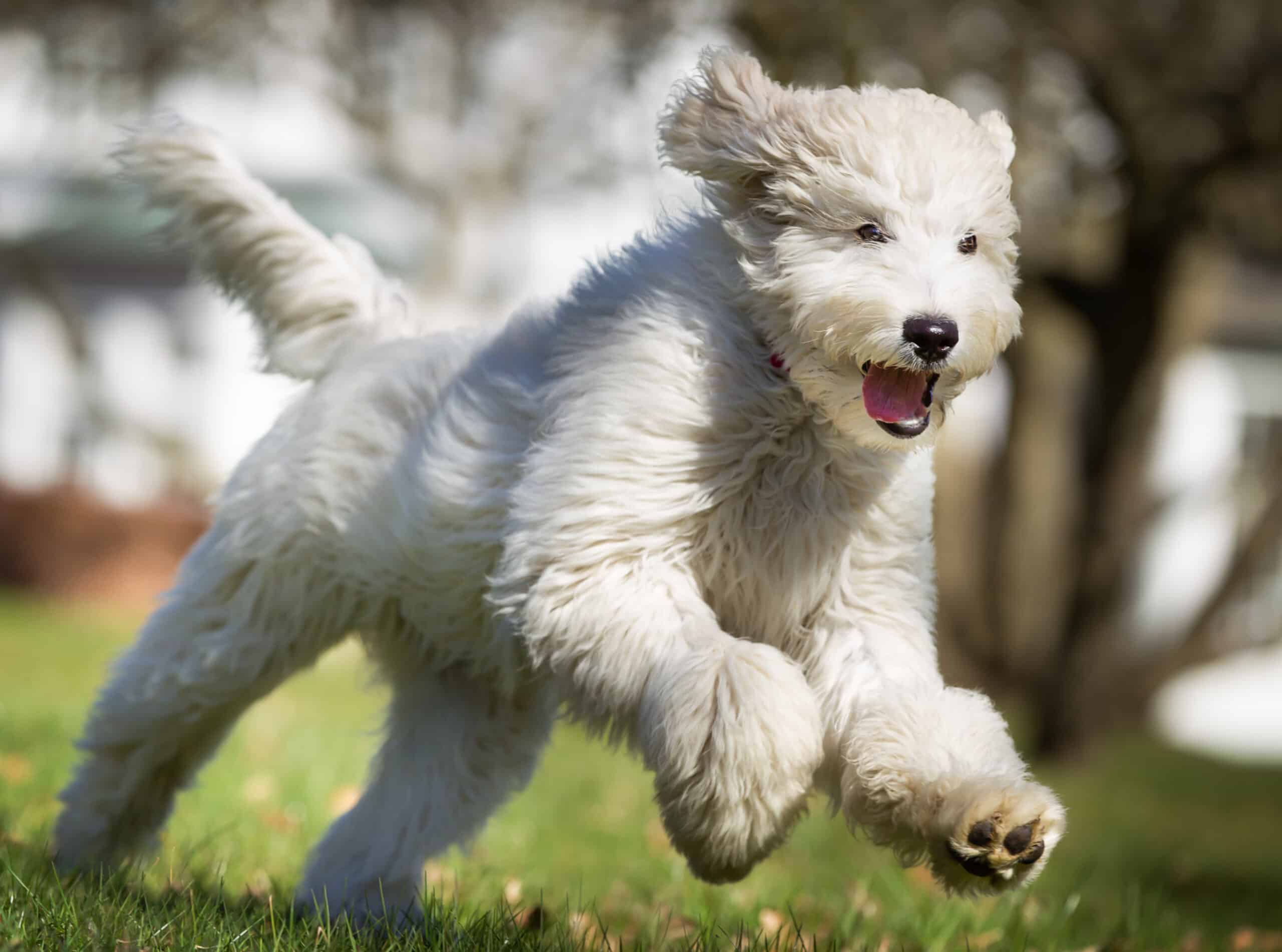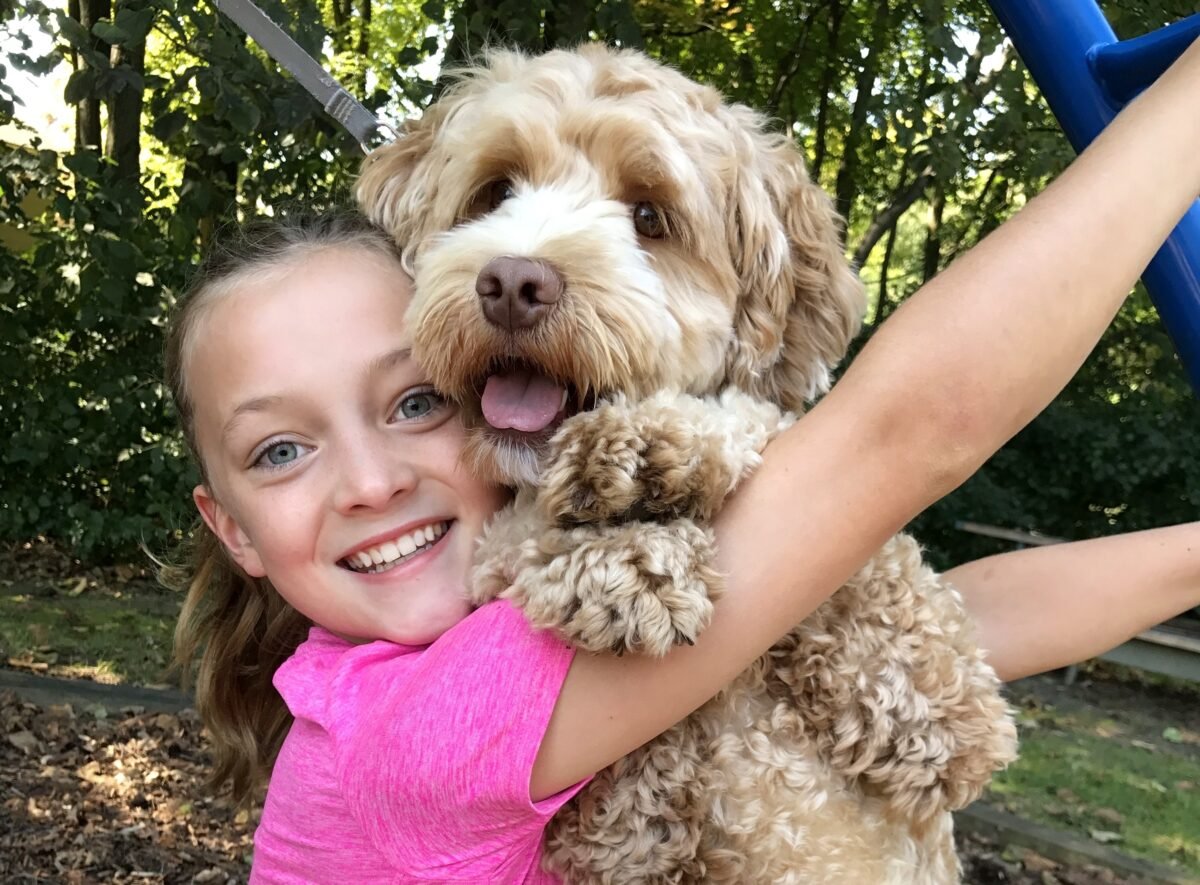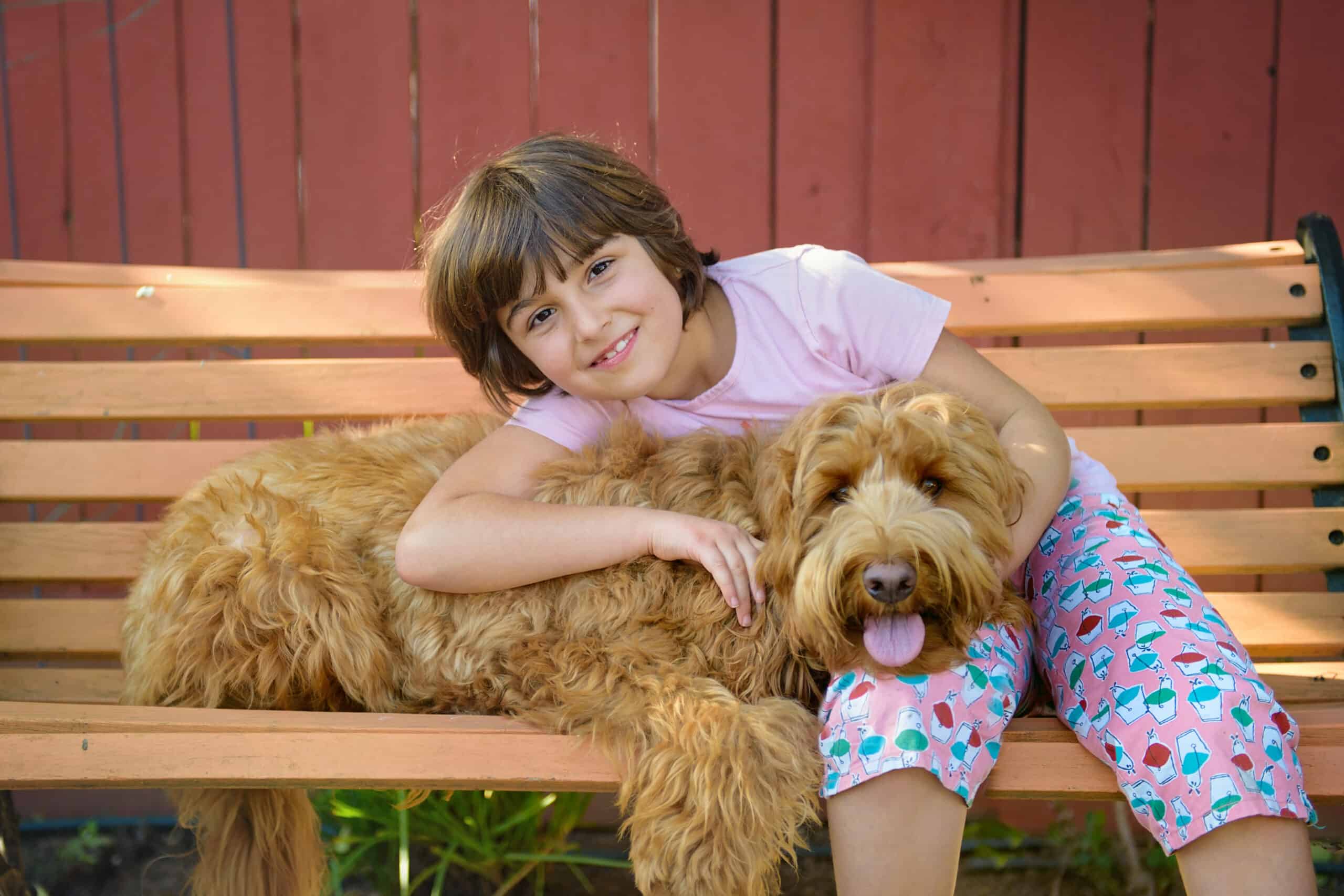Typically adorable and friendly, labradoodles are a popular breed for people across the country, and with their easy going temperament, it is easy to see why. However, if you have kids, then you need to know that this type of dog is safe in your home and how you can prepare your family for the introduction of their new furry friend. Today, we will answer the question: “are labradoodles good with kids,” and we will give you tips to follow if you decide to bring one of these small but energetic breeds into your household.
How Big Do Labradoodles Get?
The first thing that potential owners typically want to know is how big do labradoodles get? First, understand that the name labradoodle is a combination of Labrador Retriever and Poodle, and that is because it is a mix of the two. Because of this breeding, there are actually three variations of the labradoodle:
Miniature Labradoodle – This type typically comes in at between 15-25 pounds and measures up to 14-16 inches tall at the shoulder.
Medium Labradoodle – The larger variations come in at between 30-45 pounds and can reach up to 18-20 inches tall at the shoulder.
Standard Labradoodle – The largest of this breed, the standard labradoodle typically weighs between 50-90 pounds and can get up to 21-24 inches tall at the shoulder.
How Much Energy Do Labradoodles Have?

©BIGANDT.COM/Shutterstock.com
Many people don’t realize that labradoodles are typically a rather active and energetic breed. That is because they are a combination of breeds that are typically energetic on their own. However, their energy level often depends on factors such as their age, genetics, health, and lifestyle.
In order to work off a lot of that excess energy, labradoodles require a lot of physical exercise and mental stimulation in order to stay healthy. If you are planning on getting a labradoodle, you need to ensure that you have the time available to provide proper care.
Typically, labradoodles are more energetic when they are puppies but they tend to cool down as they get older. With that said, every labradoodle will be different, and you won’t know what you are in for until you bring your dog home. Once you get them, observe their behavior and adjust accordingly.
How to Train a Labradoodle
Are labradoodles good with kids? They can be, but in order to get them there, it is essential that you take the time to properly train your dog as soon as you get it home. Start by focusing on basic lessons like teaching it how to sit, stay, come, and heel. When your dog accomplishes a task successfully, encourage their good behavior by giving them treats and positive reinforcement. Never treat your dog with physical punishment or tactics of fear or aggression. Doing so could hurt your dog, and they may not trust you going forward. Just be sure to be consistent and use the same commands every time so your dog can learn.
It is also important that you crate-train your labradoodle. Your dog needs to be comfortable in a confined space, especially if you won’t be home around to take care of them all day. When you crate-train, start by putting treats or toys inside the crate and then leave the door of their crate open. Then, gradually increase the amount of time that your dog spends inside the crate until they are comfortable.
The other most important part of training is to socialize your dog. Your pup needs to get used to new situations, so they don’t act out at home or in public. Expose your labradoodle to different people, animals, and environments so they can develop the necessary social skills and reduce their anxiety and fear in new situations.
How Much Maintenance Do Labradoodles Require?
Another thing to consider when asking “are labradoodles good with kids” is how much maintenance will be required. In essence, the required amount of maintenance will depend on the coat and temperament of your dog.
Typical Maintenance Requirements
If your labradoodle has a wooly or curly coat, then it will require more grooming. Typically speaking, your labradoodle will need to be groomed at least once every six to eight weeks with a bath, haircut, and a nail trim. Keep this routine going to ensure that their coat stays in good condition and prevents matting. Even when your dog isn’t professionally groomed, owners should be brushed every few days to avoid matting and tangling. Regular brushing will also remove dirt and debris and prevent skin irritation and other issues.
Dental hygiene is also important. Brush your labradoodle’s teeth regularly to keep their teeth and gums healthy and to keep their breath fresh.
Physical exercise is also essential. Labradoodles are energetic, and they need constant activity to work out their anxiety. Ensure that you allow your dog to enjoy daily walks, runs, and play sessions so they can get the exercise that they need.
When it comes to feeding, don’t feed them too much too often or they could grow too large, and it could hurt their joints. Use portion control and watch their weight as time goes on. Once they become adults, feed them twice per day to spread their daily calorie intake across meals.
Healthcare and common issues
The good news is that labradoodles are typically healthy dogs, but they will require the same veterinary care as any other breed. Schedule them for regular checkups so the vet can monitor your dog’s overall health and identify potential issues early on. It is also important to keep up with all vaccinations to prevent common diseases.
Preventative care is also important. Talk to your vet about the important steps to take. Among them is providing your dog with regular flea, tick, and heartworm preventatives. You should also provide the necessary care essential to reduce the potential for ailments that are common to labradoodles. Such conditions include:
- Ear infections
- Allergies
- Gastrointestinal issues
- Skin irritation
- Diarrhea
Since your dog is a poodle mix, it may also experience hip dysplasia, which is common in poodles.
How Much Does it Cost to Own a Labradoodle?
The initial cost of a labradoodle will depend on the breeder, but typically, you can expect to spend anywhere from $1,000-$3,000 or more to get the dog. When you choose a breeder, ensure they are licensed and that they are able to provide proof of genetic testing, so you choose a healthy dog. Most breeders want their dogs to go to good homes, so they will likely be upfront with this information.
Once you have the dog, you’ll need to buy the essential supplies, including dishes, a bed, a crate, toys, and food.
Once you have the labradoodle, you can expect to pay between $1,000 to $5,000 or more per year for the following costs:
Food and Supplies – You will need to buy food at least once per month. You will also need to replenish the dog’s essential supplies and grooming supplies. These costs will typically be between $500-1,000 per year.
Veterinary Care – Bringing your labradoodle to its regular veterinary visits will cost money, as will the vaccinations and preventative care. That can cost between $300-$1,000 per year. You may be able to reduce that cost by purchasing pet insurance.
Training – Even if you train the dog yourself, it will require continuous training due to the fact that labradoodles are active and highly intelligent. If you do not have the time, then you will need to bring them to a professional trainer. If you do, you can expect the classes to cost between $100 to $1,000.
Grooming – Those regular professional grooming sessions will cost money, typically between $50-$100 per session. You will also need to pay for the grooming supplies that you use at home.
How Old Should Your Child Be When You Get a Labradoodle?

©MRC24/Shutterstock.com
There are several considerations that you will need to make before bringing a labradoodle home to your children. While this breed is typically very friendly and affectionate, it does require a lot of care. With that said, toddlers and young children may not know how to react around the dog, and they may accidentally hurt it.
School-aged children typically understand how to act around dogs, and they may even be able to help with some of the responsibilities. With that said, your children can still be relatively young when you get a labradoodle. They are typically able to handle a dog around 6 years old.
Ultimately, there is no specific age. However, parents need to carefully consider their lifestyle, the maturity of the kids, and how much time you have to care for the dog and supervise the children when they watch the dog. If you need further advice, speak to the breeder as they have a history with the dog, and they can elaborate.
Can Kids Be Allergic to Labradoodles?
The great news about a labradoodle is that the breed is typically considered hypoallergenic, which means that it is less likely to cause an allergic reaction in the people around them. The reason is that labradoodles have a curvy or wavy coat that doesn’t shed much, which reduces the amount of dander in the air.
However, no dog is completely hypoallergenic, and if your child typically has an allergic reaction around other dogs, then they may experience the same around your labradoodle. If you believe that your child has a history of allergies, then before you get a dog, bring your child to an allergist who can perform the necessary tests.
Overall, a labradoodle is typically a good choice for families with allergies.
General Tips and Precautionary Measures
There are particular considerations that you should make if you get a labradoodle. In addition to what we have discussed so far, also consider the following:
Avoid Toxic Foods
Labradoodles can be harmed by many foods and plants that may be considered toxic. A few items to avoid include:
- Mushrooms
- Onions
- Garlic
- Macadamia nuts
- Japanese plum
- Aloe vera
- Cherry
- Broccoli
Don’t Bathe Them Too Frequently
Like many dogs, it's important not to go overboard with the bathing of your dog. Only give them a bath if they are visibly dirty or smelly. If you wash them too frequently, then you could dry out their skin and cause them to feel itchy.
Verdict: Are Labradoodles Good with Kids?
In the end, the answer to the question, “are labradoodles good with kids” is yes. Labradoodles are a generally fun and friendly breed, and they make great pets. Plus, the fact that they cause fewer allergic reactions is a big plus. In the end, it all comes down to the maturity of your children. If you think they are ready, then adopt a labradoodle today.
The image featured at the top of this post is ©Dina Uretski/Shutterstock.com.
